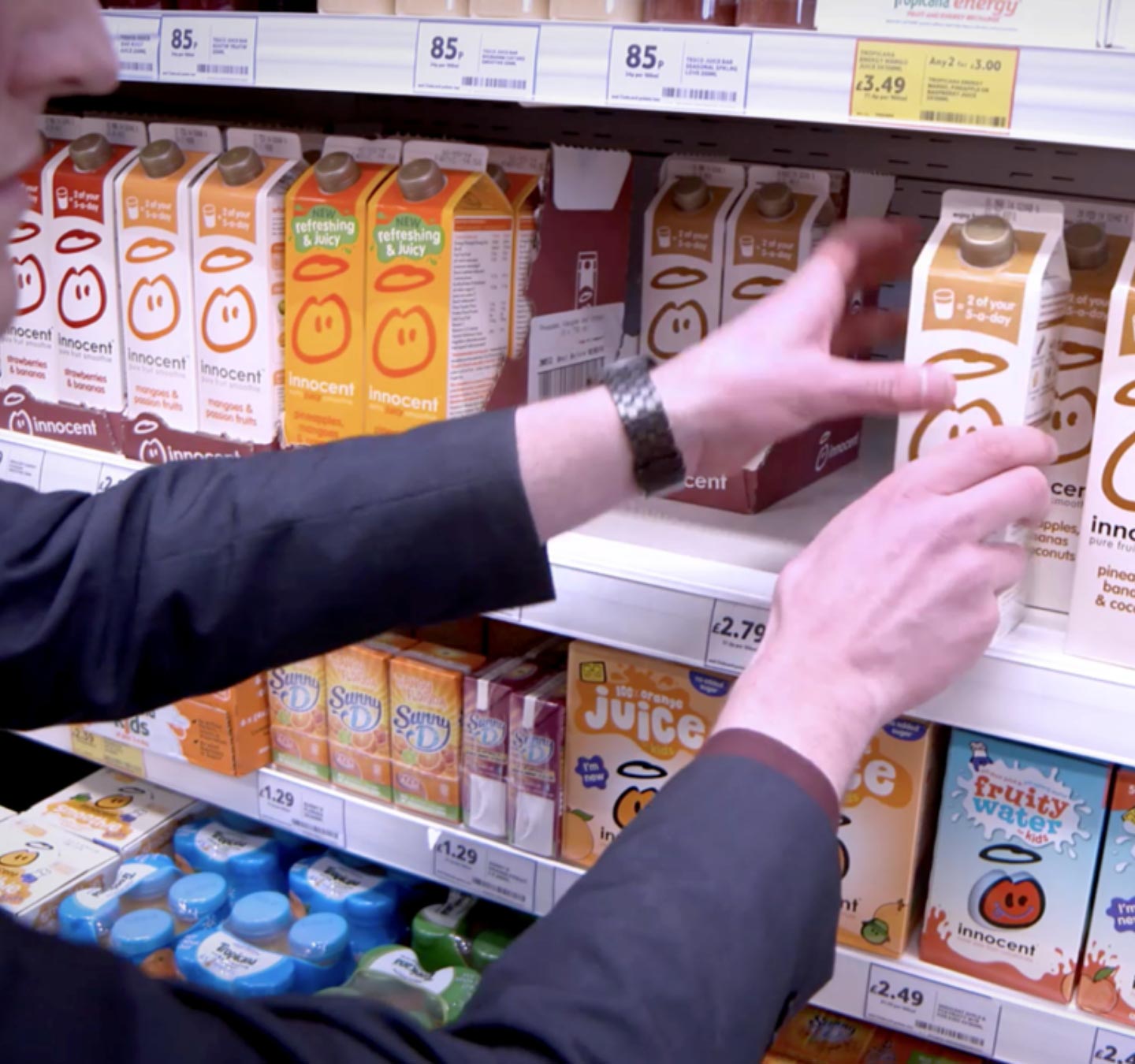New product launches can be tricky to get right. Getting the product on the shelves is only the half of it – you’ll also need to persuade customers to buy it. This is where creating a product launch strategy comes in, helping to ensure your new product makes an impact and stands out from competitors
In this blog, we’ll cover everything you need to know about how to create a successful product launch strategy, from researching your target audience to analysing the response to the product post-launch.
Here at Tactical Solutions, launching new products with a bang is what we do. Get in touch with the team to find out more about how we can help your brand soar to new heights.
What is a product launch strategy?
When you’ve invested so much time, energy, and money into a new product, the last thing you want is to fall at the last hurdle. According to Forbes, 30,000 new products are launched yearly, so you need to make sure your product stands out from the crowd if you want consumers to actually buy it.
A product launch strategy is a plan that outlines how your new product will be introduced to the market, with the goals of creating awareness, generating interest, and appealing to your target audience. And it’s not just about the launch itself – thorough pre-launch planning and post-launch analysis is required to ensure your new product is successful and achieves your desired outcomes.
A carefully planned strategy will help build anticipation, showcase the value of your product, and capture the attention of your target audience, establishing a solid foundation for success.
What are the key stages of a successful product launch strategy?
As we’ve already mentioned, your product launch strategy shouldn’t just be about launch day – pre-launch and post-launch planning are also essential for success.
While each product launch will differ slightly depending on the nature of the product and your unique branding, these key stages should be considered every time you plan a new launch.
Pre-launch planning
Before the product launches, you’ll need to set out clear goals of what you want to achieve and how you want to get results, as well as work out the most important things for your launch so that you can prioritise effectively.
Some things to consider include:
Launch size
Are you planning on doing a soft product launch or a full-scale product launch? Your launch strategy will naturally differ slightly depending on which option you choose.
Soft product launches involve inviting a selection of people from your target audience to try your product before anyone else, so you can ask them questions and conduct market research, which can then be used to make your product better in the long run before launching it on a larger scale. It might take longer to launch a product this way, but the added element of market research means you can tailor your later full-scale product launch better and hit the ground running when you launch the product properly.
Full-scale launches are probably the most common type of new product launch, promoting the product to as wide an audience as possible by using an expansive retail marketing campaign with lots of different angles. You’ll typically use a range of traditional and digital marketing strategies with a full-scale launch to attract as many people as possible. However, this can be quite expensive and time-consuming, so it might not be right for you, depending on your budget and the timeframe you have. You don’t specifically target customers with this option, opening your product up to everyone at your launch event.

Researching your audience is a major part of the planning stage, meaning your marketing team can tailor your plans towards your target market to make the launch as successful as possible. One of the issues that can occur is overreaching, which is where companies try to market their launch to a wider audience instead of their target market. Whilst this might seem like a good idea to get as many people on board as possible, it can push away the people who are most likely to purchase your product. Make sure you know exactly who your target audience is, and tailor all marketing towards them.
Product testing
Product testing is an aspect of the pre-launch process that can be overlooked, but it’s something you need to be doing throughout if you want to stay ahead of the game and make sure launch day itself goes off without any issues! If you’ve launched other products in the past, then feedback from previous launches can be used to work out how to work your marketing strategy around your target market and make your launch as successful as possible.
Launch day
Executing a successful launch day is a major part of the new product launch process, and should be the culmination of all your planning – so long as you have planned everything effectively and the product has been tested regularly, it should be successful. Depending on whether you’re hiring staff for the occasion or if you’re using the employees of the shop you’re launching in, you’ll need to make sure they’re fully trained for the launch and can help your potential customers to make for an ideal customer experience.
Some companies decide to throw a bit of a party on their launch days, giving out free food and drink to entice potential customers and make them feel rewarded – this might cost more money, but could be highly beneficial for you as a piece of experiential marketing.
Post-launch analysis
You might think that once the launch day has been completed that that’s the end of the product launch process, but there’s one more step.
Getting customer feedback and conducting market research after the launch is an important last step – this feedback can then be analysed to make the product better if your potential customers report any issues. Feedback from customers can also be used for future launches to improve them during the planning process.
What’s more, advanced retail technology can be used to keep track of how the product is performing and help you make informed decisions about what to do next, whether it’s ordering more stock or positioning the product elsewhere on the store shelves so it jumps out more to customers.
Common product launch challenges and how to overcome them
Of course, launching your new product is bound to come with some challenges, but making sure you’re prepared will ensure everything goes off without a hitch.
Not knowing your audience
We’ve already touched on this, but knowing your target audience is key to a successful product launch. Use surveys, focus groups, and competitor analysis to ensure your product resonates with your target audience, then use feedback to refine the product before launch.
Think about what kind of marketing will most appeal to your target audience as well. Traditional advertising works well, but digital marketing efforts such as social media marketing and email marketing should also be considered, especially if you’re targeting a younger, more tech-savvy generation.
Not promoting the product well enough
New products can easily slip under the radar if there’s not enough buzz generated in the lead-up to the launch. Start promoting the product early, teasing its release on social media, via your email newsletter, or through partnerships with influencers. It can be helpful to create a content calendar for this, ensuring you’re getting the word out about the new launch to as many people as possible and successfully building anticipation.
One case study that shows just how successful a strong pre-launch strategy can be is the launch of the iPhone in 2007. Apple established their product as unique from any other mobile phone currently on the market by describing it as ‘an iPod, a phone, and an internet communicator’, all rolled into one. What’s more, they created scarcity and exclusivity around the product by opting for an initial limited availability release.
So, what can we learn from this? This case study teaches us that controlled pre-launch buzz builds desire and anticipation for a product, as well as that clear positioning and simple messaging can be very powerful.
Under or overestimating product demand
If you launch a product without carrying out proper demand forecasting, you might find that you run out of stock too quickly, or are left with too much stock that you can’t sell. To avoid this issue, make sure you use data to predict demand and keep a close eye on inventory levels. Store audits can also come in handy here, helping identify any opportunities and areas for improvement.
Tactical Solutions’ expert team can guide you through your product launch
The process of creating a product launch strategy can seem daunting at first, as it involves a great deal of planning and knowledge, especially if you’re new to the industry. There are a lot of things to keep track of, and it can be easy to miss a step.
This is where Tactical Solutions comes in. Our expert team has a great deal of knowledge and experience in the field and is ready to help with your upcoming launch to make it as successful as possible.
Why risk a failure to launch when our team of experts are waiting on hand to help you through every step of the journey, from the planning stages right through to the end result?





